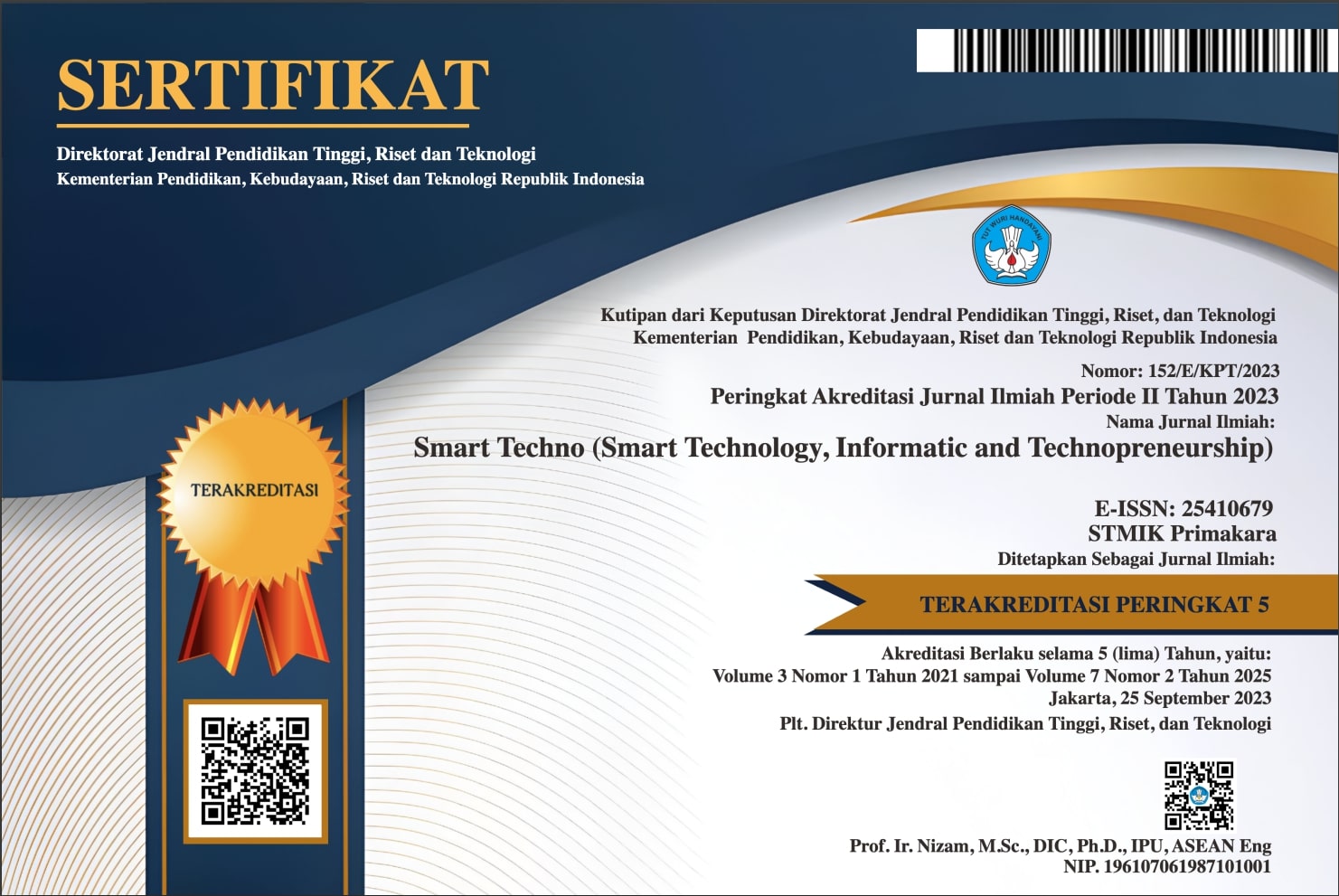Analisis Dan Perancangan Sistem Point Of Sales (POS) Pada Toko Harco Bali
Abstract
Toko Harco Bali is a company that sells electronic equipment. In the system that is running at the Toko Harco Bali, it is still done manually such as making notes which often have errors when calculating the total payment, there is no recording of customer data & inventory records that are still written in notebooks and make time less effective, as well as the lack of existing internal control activities so as to make employees take concurrent jobs. Point Of Sales (POS) is a system to process sales transactions of goods. Internal control is one of the systems to guarantee the security of the company. The purpose of this research is to analyze and design the point 0f sales system. In this design, the system can provide convenience and security in the transaction process. The research method used is the system development method, namely the prototyping approach. The stages in the prototyping method are, design or planning and end in the design of a new proposed system. The results of the analysis of SPI components in the form of control environment, risk assessment, information and communication, supervision and control activities and the results of this research design in the form of Database DFD, ERD and interface design
Downloads
References
[2] F. A. Sandi and L. Septiana, “Perancangan Sistem Informasi Point Of Sales Berbasis Web Pada Perusahaan Sablon,” vol. 1, no. 2, pp. 123–130, 2021.
[3] P. Gede, S. Cipta, N. Wayan, and W. I. Wayan, “RANCANG BANGUN SISTEM INFORMASI SOFTWARE POINT OF SALE ( POS ) DENGAN METODE WATERFALL BERBASIS WEB,” vol. 10, no. 1, 2021.
[4] P. Issn, S. Akuntansi, F. Ekonomi, and U. R. Kepulauan, “ANALISIS SISTEM INFORMASI AKUNTANSI DAN PENGENDALIAN INTERN PERSEDIAAN BAHAN BAKU KAIN (Studi Kasus CV. Celine Productin) Rizki Eka Putra,” vol. 5, no. 2, 2018.
[5] S. Informasi et al., “Sistem informasi, keuangan, auditing dan perpajakan,” vol. 1, no. 2, pp. 157–163, 2017.
[6] S. G. Omposunggu, R. V. Salomo, and U. Indonesia, “Jurnal Ilmiah Administrasi Publik ( JIAP ) Analisis Pelaksanaan Sistem Pengendalian Intern Pemerintah di Indonesia,” vol. 5, no. 1, pp. 78–86, 2019.
[7] R. Umar, A. Hadi, P. Widiandana, and F. Anwar, “Perancangan Database Point of Sales Apotek Dengan Menerapkan Model Data Relasional,” vol. 5341, no. October, pp. 33–41, 2019.
[8] M. Ardiansyah, “Analisis dan Perancangan Sistem Informasi Point of Sales Berbasis CRM,” vol. 04, no. 02, pp. 1–7, 2019.
[9] A. Dan, P. Sistem, P. Of, S. Pada, and C. V Sanjaya, “No Title,” pp. 1–10.
[10] A. T. Herdiansyah, A. A. Pratama, I. Octavia, and R. A. Sidiq, “Perancangan Sistem Informasi Point of Sale Berbasis Website pada Toko Azam Grosir dengan Metode Waterfall,” vol. 6, no. 2, pp. 388–394, 2021.
[11] S. C. Cahyodi and R. W. Arifin, “Sistem Informasi Point Of Sales Berbasis Web Pada Colony Amaranta Bekasi,” vol. 1, no. 2, pp. 189–204, 2017.
[12] P. Dika, A. Wiguna, I. P. Agus, I. P. Satwika, and S. Artikel, “Jurnal Nasional Teknologi dan Sistem Informasi Rancang Bangun Aplikasi Point of Sales Distro Management System dengan Menggunakan Framework React Native,” vol. 03, pp. 149–159, 2018.
[13] F. Ilmu, K. Universitas, and B. Darma, “Bina Darma Conference on Computer Science 2019 RANCANG BANGUN APLIKASI POINT OF SALES PADA APOTEK KAMILA BERBASIS WEB Bina Darma Conference on Computer Science 2019,” pp. 244–252, 2019.
[14] I. A. Dewi, “Point of Sales System in InHome Café Website using Agile Methodology,” vol. 01, no. 01, pp. 1–19, 2021.
[15] A. S. Sani, F. Pradana, and D. S. Rusdianto, “Pembangunan Sistem Informasi Point Of Sales Terintegrasi Dalam Lingkup Rumah Makan Beserta Cabangnya ( Studi Kasus : RM . Pecel Pincuk Bu Tinuk ),” vol. 2, no. 10, pp. 3249–3257, 2018.
[16] D. S. Budi, “Analisis Pemilihan Penerapan Proyek Metodologi Pengembangan Rekayasa Perangkat Lunak,” vol. 5, no. November, pp. 24–31, 2016.
Copyright (c) 2023 Stefani Yohana Paula Bere, Ni Made Estiyanti, Nengah Widya Utami

This work is licensed under a Creative Commons Attribution 4.0 International License.
Authors who publish with the Smart Techno agree to the following terms:
- Authors retain copyright and grant the journal the right of first publication with the work simultaneously licensed under a Creative Commons Attribution License (CC BY-SA 4.0) that allows others to share the work with an acknowledgment of the work's authorship and initial publication in this journal.
- Authors are able to enter into separate, additional contractual arrangements for the non-exclusive distribution of the journal's published version of the work (e.g., post it to an institutional repository or publish it in a book), with an acknowledgment of its initial publication in this journal.
- Authors are permitted and encouraged to post their work online (e.g., in institutional repositories or on their website) prior to and during the submission process, as it can lead to productive exchanges, as well as earlier and greater citation of published work. (See The Effect of Open Access)







